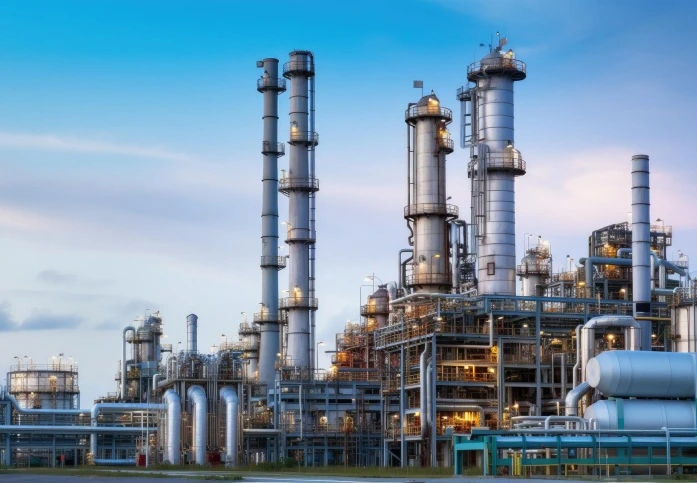Refining operations are inherently complex and involve managing hazardous materials, making safety protocols essential for safeguarding workers, protecting the environment, and preventing costly incidents.
By thoroughly examining the root causes of safety incidents, the Root Cause Analysis (RCA) process enables refining operations to proactively tackle potential hazards, reinforce preventative measures, and cultivate a safer working environment. This approach minimizes risks and fosters a culture of continuous improvement in safety practices.
What is Root Cause Analysis (RCA)?
The root cause analysis process systematically identifies the foundational causes of problems or incidents within an organization. Rather than merely addressing the impact of an issue, RCA focuses on uncovering the underlying factors that lead to undesirable outcomes. This process typically involves a series of steps, including –
- Problem Identification: Clearly define the issue or incident that needs investigation and root cause analysis.
- Data Collection: Collect relevant, high-quality data and information related to the incident, including witness accounts, operational procedures, and environmental conditions.
- Cause Identification: Using various tools and techniques—such as the “5 Whys” method or fishbone diagrams—to explore potential causes and identify the root cause(s).
- Corrective Action Implementation: Developing and implementing solutions to address the identified root causes to prevent recurrence.
- Monitoring and Review: Assessing the effectiveness of the cause and corrective actions and making necessary adjustments to ensure sustained cause and effect root cause analysis quality improvements.
The “5 whys root cause analysis” is one of the most used simple tools for problem-solving and root cause analysis and is widely applied across different industries. This 5 whys analysis method involves asking “why?” to identify why an issue occurred and repeating the question four additional times. This process continues until the actual underlying cause of the problem is uncovered. The five whys root cause analysis includes the following questions –
- Why did the problem happen? – To identify the initial reason for the issue.
- Why did that reason occur? – To explore what caused the first answer.
- Why did that underlying cause happen? – To further probe into the next level of causation.
- Why did that condition exist? – To find out why the situation continued or was possible.
- Why did that situation develop? – To uncover the main or root cause behind the entire sequence.
Common Safety Issues in Refining Operations
Chemical Exposure
Refineries process dangerous chemicals such as hydrogen sulfide, benzene, and sulfuric acid. Accidental leaks or spills can result in serious health hazards, including respiratory issues, skin burns, or long-term illness from chronic exposure.
Fires and Explosions
The volatile nature of hydrocarbons and the high temperatures used in refining creates the root cause analysis risk identification of fires and explosions. Equipment failures, improper handling, or inadequate safety measures can lead to catastrophic incidents, causing injury or loss of life.
Human Error
Workers’ mistakes, such as improper use of equipment, inadequate communication, or insufficient training, are common safety risks. Even minor errors can lead to significant incidents in high-risk environments like refineries.
Equipment Failures
Aging infrastructure, poorly maintained machinery, or improper operation can result in equipment malfunctions. This can lead to uncontrolled releases of hazardous materials, mechanical failures, or overheating, increasing the risk of accidents.
Process Safety Management (PSM) Issues
Failure to follow PSM protocols, such as improper risk assessments, inadequate emergency preparedness, or failure to update safety procedures, can exacerbate safety issues. Proper adherence to these standards is crucial for preventing incidents.
How Root Cause Analysis Improves Safety Protocols
Identifying Underlying Causes of Safety Incidents
One of RCA’s core strengths is its ability to identify the underlying causes of safety incidents rather than just addressing the symptoms.
For example, an equipment failure might initially seem like a mechanical issue, but RCA can reveal deeper factors such as inadequate maintenance, improper training, or even flawed design. By uncovering the basic root cause analysis process, refineries can implement more targeted corrective actions and prevent the recurrence of similar incidents.
Enhancing Preventative Maintenance and Equipment Reliability
RCA significantly contributes to improving preventative maintenance strategies. By analyzing the root causes of equipment malfunctions or failures, refineries can identify wear patterns, insufficient maintenance practices, or operational stress factors. These insights allow for more proactive maintenance schedules, better equipment reliability, and reduced downtime.
Strengthening Human Error Prevention
Human errors are one of the leading causes of accidents in refining operations. RCA helps refineries identify the root causes behind mistakes, such as insufficient training, unclear instructions, or communication breakdowns.
By addressing these factors, refineries can enhance worker training programs, improve operational clarity, and establish more reliable systems to minimize the risk of human errors. Strengthening error prevention creates a safer work environment and reduces the potential for incidents caused by mistakes.
Facilitating Proactive Safety Management
RCA shifts safety management from a reactive to a proactive approach. Instead of waiting for incidents to occur, RCA encourages organizations to investigate near misses and minor issues before they escalate into larger problems. Refineries can detect emerging risks early by consistently applying RCA, implementing corrective actions, and updating safety protocols.
Looking to improve safety and compliance? Learn more about our process safety management services today.
The RCA Process: Step-by-Step Guide for Refining Operations
Data Collection and Incident Reporting
A robust RCA process begins with a comprehensive incident reporting system. This system should capture detailed information about all incidents, including near misses. Accurate and timely reporting is crucial to maintaining data integrity. Standardized reporting formats ensure consistency in data collection across different departments.
Analysis and Identifying the Root Cause
Once an incident occurs, a cross-functional team is assembled to conduct the RCA. The team employs various analytical techniques, such as the 5 Whys and Fishbone Diagram, to investigate the incident and identify the root cause. Fault Tree Analysis can be used to identify potential failure modes and their combinations.
Implementing Corrective Actions and Safety Protocols
The final step in the RCA process involves implementing corrective actions and updating safety protocols. Corrective action plans are developed with specific actions, responsibilities, and deadlines.
For root cause analysis quality improvement, monitoring the cause and corrective actions to ensure their effectiveness is crucial. Lessons learned from the RCA are incorporated into existing safety protocols, and employees are trained on the new procedures.
Suggested Read: Edge AI Computing
Benefits of Applying RCA to Refining Safety Protocols
- Long-Term Risk Reduction: Automated root cause analysis in the oil and gas industry helps address underlying issues, assisting refineries to prevent recurring incidents and reduce long-term operational risks.
- Cost Savings through Incident Prevention: By preventing safety incidents and equipment failures, RCA minimizes costly repairs, downtime, and liability expenses.
- Regulatory Compliance and Industry Standards: RCA helps refineries stay compliant with safety regulations and industry standards by systematically improving safety measures.
- Overcoming Organizational Resistance to RCA: Implementing automated root cause analysis in the oil and gas industry often requires overcoming resistance to change, as it demands a shift in culture toward continuous learning and accountability.
- Ensuring Accurate Data Collection and Incident Reporting: Effective RCA relies on accurate data and thorough incident reporting, which can be challenging due to incomplete records or miscommunication.
Conclusion
Conducting a root cause investigation and implementing solutions enables employers to significantly reduce or completely prevent the recurrence of similar issues or incidents. At Ingenero, we understand the complexities of refining operations and the critical importance of safety. Our expertise in digital transformation and innovative engineering solutions enables us to enhance the RCA process significantly. We leverage advanced data analytics to provide deeper insights into incidents, allowing for proactive measures that not only address immediate concerns but also prevent future occurrences. When employers prioritize prevention over simply addressing surface-level symptoms, they also build public trust.
FAQs On Root Cause Analysis
What is Root Cause Analysis (RCA) in refining operations?
Root Cause Analysis, or RCA, is a method used to figure out why an incident happened — not just what happened. In refining, it’s a way of digging into the actual reasons behind a failure or accident so teams can fix the real issue, not just the symptoms.
How does RCA help improve safety protocols in oil refineries?
By finding out the true cause of an incident, RCA helps teams update their safety procedures to avoid repeat problems. It’s basically learning from what went wrong so the same mistake doesn’t happen again — which makes things safer for everyone.
What are the most common root causes of safety incidents in refineries?
Some of the usual suspects include equipment failures, poor maintenance, unclear procedures, or human error. Sometimes, it’s a mix of things — like outdated systems and a rushed decision. RCA helps untangle those factors.
How is the “5 Whys” technique used in root cause analysis for refinery safety?
The “5 Whys” is exactly what it sounds like — asking “Why?” over and over (usually five times) to drill down to the real reason something went wrong. For example:
Why did the pump fail? → It overheated.
Why did it overheat? → It ran dry.
Why was it dry? → No oil supply.
…and so on — until you hit the actual root cause.
What are some examples of human error identified through RCA in refineries?
It could be someone skipping a checklist, misreading a gauge, or not following a shutdown procedure. RCA doesn’t point fingers — it helps understand why someone made that mistake. Maybe they weren’t trained properly, or the instructions weren’t clear.
Can RCA prevent equipment failure in oil and gas refining operations?
Yes — and often it does. By identifying patterns or recurring issues, RCA helps maintenance teams fix things early or redesign processes to be more reliable. It’s all about learning from the past to avoid future failures.
How does root cause analysis support process safety management (PSM)?
RCA feeds directly into PSM by helping improve safety systems, operating procedures, and training. Every time there’s an incident, RCA helps strengthen the whole safety net — so fewer issues slip through the cracks.
Why is accurate incident reporting important for effective RCA in refineries?
You can’t fix what you don’t know. If an incident isn’t reported clearly and completely, the analysis might miss key details — and you end up treating the wrong problem. Good reporting gives the RCA team a clear picture of what happened and when.
What are the benefits of using automated RCA tools in oil and gas industries?
Automated tools help speed up the process, keep everything documented, and ensure nothing gets missed. They can also spot trends across multiple incidents that might not be obvious when looking at them one by one.
How often should root cause analysis be conducted in refinery safety programs?
It should be done anytime there’s a safety incident, near miss, or even recurring equipment issues. Some companies also do periodic reviews just to stay proactive. The goal is to keep learning and improving — not just reacting when something breaks.




